




Whilst I think as an overall Superman story and film, Man of Steel is a stronger entry due to its more serious take, Superman the Movie is still worth a high place on any list of comic book movies, and after 40 years, that’s pretty darn impressive. Whilst other films have grossed more at the box office, I think only Batman (1989) has had as big an impact on the culture at the time of release. This film is the first true superhero film and directors still use it to this day to guide them, most notably, Wonder Woman (2017). The film makers tried something that had never been done before and achieved something that still resonates 40 years later.

Part 1: Superman the Movie.
Released: 1978.
Directed by Richard Donner.
143 minutes (theatrical).
The opening shot of Superman: The Movie is an odd one. Opening up on a comic book, being read in narration by a young child, before the camera pans into the page and through the panel, with the Daily Planet Globe becoming live action, as the camera pans up over the Daily Planet and onward into space. We are then treated to an extremely long journey through space and credits. Films don’t open with long credit sequences anymore. But the Superman credits are very famous. There are some reports that suggest the credits alone cost $1million. I don’t believe this, as the film was way over budget by the time the credits were made and I don’t believe they would spend, nor had, this kind of money at that stage. But they were impressive for the time, as the words flew in to view and expanded onto the screen. Simple by today’s standards of course, but for 1978, this was quite amazing. But let’s not forget, the real reason we sit through the credits in this era of skipping to the next scene on Blu-Ray: John Williams’ Superman March. The Williams theme came to life before Superman himself had graced the silver screen (at least in a true theatrical sense). The character of Superman was 40 years old at this point, yet from the moment the film debuted in December of ’78, the world would seemingly never again associate Superman with another piece of music. An impressive feat of writing.


The decent into Krypton itself shows an impressive miniature. The crispness of Blu-Ray may give away some of its secrets, but one’s imagination stirs as you imagine what must be going on in these strange buildings. There isn’t a lot of logic here in the design of Krypton, and that’s a good thing. This is an alien world, and this is one alien world that truly doesn’t fit much within our Earth based concept of inhabitable planets. The viewer is left with questions such as ‘how do people live here?’ ‘Are there any animals on this planet?’ ‘Is it all just one big endless building?’
The first line of dialogue belongs to Marlon Brando. He should have the first word. After all, he cashed the first pay check… all in all, Brando made around $14 million for this film. It’s generally reported that Brando was paid $3.7million for his minimal time. However, what is often not reported is that he also had a percentage deal as well. Sadly, this factor would factor into issues that are still ongoing issues of Superman in cinema. But more on that later.
Brando gives a solid performance as Jor-El. He’s not bad, he’s not really that great either. But he doesn’t have to be. He’s just Brando, and that’s enough. He’s always good. He always holds the viewer’s attention. He gives little moments of gold and he can deliver a good speech really well, such as his farewell speech to Kal-El as the baby is being prepared to leave. However, his mispronunciation of “Krypton” throughout is symbolic of his lack of real respect for the project, which he didn’t consider worthy of his time. I have seen reports that Christopher Reeve wasn’t a big fan of Brando after the experience of acting with him (even though he shot only one scene with him), but I don’t really think this is true.
Brando had not even read the script. He apparently asked Terrance Stamp what he thought of it all, and Stamp replied, ‘haven’t you read the script?’ to which Brando said no. Stamp told him to read it, as it was really good. Brando shrugged.
However, Brando does have some nice dialogue, such as the debate with the council, his interactions with the adult Kal-El, and the previously mentioned farewell speech to baby Kal-El.





The Krypton sequence is short, to the point, yet holds a lot of weight within the context of the film. The 183 minute TV edition of the film features a much longer destruction sequence, which personally I really think works better than the theatrical. The extended cut gives you a greater feeling of the chaos and terror of the destruction of the planet. However, it’s fair that it was cut down, but I just feel that the extended destruction (apart from some pointless moments, such as the Executor (that Stormtrooper rip off) being killed for instance, gives the viewer more sympathy towards the Kryptonians. When the planet (or the tennis ball that was used for the effects) explodes, we are quickly moved on to Clarks journey.
This is a key moment that Man of Steel (2013) exceeds this film. In that film, the explosion of Krypton was given a very quiet and lonely death, shown through the death of Lara). This gives the death of Krypton a very sad and inevitable end that signifies the moment that Kal-El was now alone in a sea of stars. This film quickly shows us Kal-El moving quickly through the galaxy whilst his father bores him to death with pointless lessons that he will repeat later. I’m not sure how baby Kal sat inside that tiny ship for four years.



With act one quickly over, the tone shifts drastically to Earth, and more specifically to Smallville. We don’t get a lot of Smallville. We get the Kent’s finding baby Clark. We then cut to teenage Clark being bullied and trying to impress Lana Lang. We see some of what Clark can do, such as out run a train. We then get the death of Jonathan Kent, and then Clark leaves Smallville in search of something he does not understand.
That this section of the film works so well, despite its briefness, is a due to the writing, mostly I believe of Tom Mankiewicz. The dialogue manages to be meaningful, yet underplayed beautifully by Glenn Ford, who is fantastic as Johnathan Kent, but sadly given very little screen time. Jeff East is charming as Clark, although once you notice that he has been dubbed by Christopher Reeve (more noticeable in DVD releases) it’s a little jarring. Phyllis Thaxter carries a lot of this section as well, playing the aging Martha, dealing with losing her husband and then her son. In just a few brief scenes, she does make you feel a lot for the character.
This is very old school film making here, with director Richard Donner demonstrating great skill and craftsmanship. The tracking shot in the wheat field that pans over Clark and Martha is a breathtaking shot and a great transition from the warmth of home, into the cold lonely journey towards the north pole that Clark undertakes.
Extended cuts of the film add that the young girl on the train that see’s Clark outrunning the train is in fact Lois Lane. This isn’t really needed, and the fact that Margot Kidder was quite a bit older than Christopher Reeve was, makes this scene odd, as the girl is so young compared to Clark. The actors playing her parents are Kirk Alyn, who played Superman in 1948, and Noel Neill who played Lois Lane in both the 1948 Superman serial, and the George Reeve’s Superman TV series, and then popped up in Superman Returns in 2006.

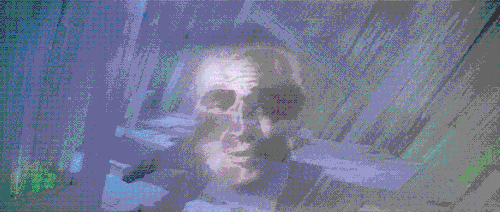
The film then takes a step back into what feels like the first act, as Krypton is reborn as the Fortress of Solitude. The creation of the fortress fascinated me as a kid. It’s much longer in the 183 TV edition, albeit needlessly. The reveal of Jor-El does come off a little silly by today’s standards. It’s also never really explained what Jor-El is. Is he just a recording? Is he some sort of technological ghost? It it some form of AI? At times through the series, it’s played like a sentient being who can interact with Clark. But other times it acts like a recording.
The reveal of Superman for the first time is a fairly artistic choice. The way Jor-El turns into a glass mask and then the mask turns and the camera fly’s through it and Superman is standing there in full costume. No Superhero has been introduced in such a way since then. The fly at camera was the first real flying sequence shot and there was apparently a great cheer as Superman flew past the camera. It’s a great shot, if not a little slow paced by today’s standards.


We then enter the third section of the movie, which is basically a mini Superman movie on its own. Once in Metropolis, the film takes on a comic book feel. This Metropolis is very New York, accent’s and all… not to mention the Statue of Liberty.
Here we meet Lois Lane, played by Margot Kidder. She’s not the type of actress you’d expect for the role, however, in this film, Kidder is in very good form and has some real spunk about her. This was before she started having some issues that would affect her post Superman career. Kidder gives Lois some bite and you could certainly see her as a great investigative journalist. We don’t see that in the Reeve movies, but Kidder gives the character enough that we don’t really need to.
We also get introduced to the Daily Planet, run by Perry White. Jackie Cooper is excellent as the hard as nails, old school editor who's seen it all. He has a number of great lines that wiz by almost unnoticed.
We also get introduced to Superman's pal, Jimmy Olsen, played by Mark McClure (who was in all 4 films, plus Supergirl, and recently Justice League (but not as Jimmy).

The Daily Planet is presented as a tough place to work, and Clark is not warmly received.

Lex Luthor then steps onto the screen for the first time, played to perfection by Gene Hackman. It might seem a little campy by today’s standards, and it’s a trillion galaxies away from the Luthor of Batman v Superman, but Hackman is both humorous and dangerous in every scene. It’s easy to miss some of the best elements of Hackman’s portrayal, especially if you only judge it from memory. If you haven’t seen it in a long time, rewatch it and really focus on him. He is well supported by Valerie Perrine as Miss Teschmacher, or as Lex would say, “MISS TESCHMACHER!!!!!” But it’s Ned Bettty as Otis who is the highlight of the villains scenes, even when he’s just in the background, he’s worth watching… “Otisberg?”
Superman the Movie is at its best in its first 100 minutes. The final act, when California is hit with a bomb and a big earthquake occurs, is visually very good, but the plot trips over itself a bit. This is due to rewrites.



The first rescue of Lois is a classic scene in cinema. A result of fine directing by a director taking this film seriously, the moments of Lois trying to hang on in the helicopter are much more dramatic than the usual damsel in distress scenes we would expect in comic book movies, especially from this era. The film might slightly over play its hand with this scene, but its the first true Superman scene ever seen on the silver screen and damn it, it needed to be big!
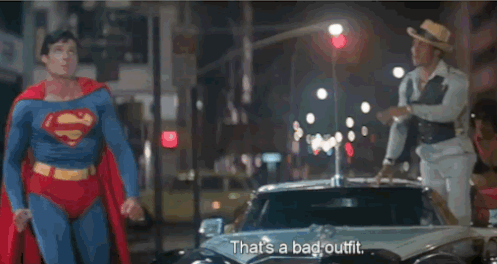

This sets up the romance between Superman and Lois. This is given plenty of room to breath, with small moments between them, and then the big scene when they fly together.
Don't think too much about the science of Lois being so high in the sky, but this is a fantasy after all.
The voice over from Lois (Can You Read My Mind) is a little cheesy, but the Williams score gives up a great love theme and this section of the film gives us a classic Hollywood love story.

First of all, the film doesn’t explain the missiles very well. These are two separate events that occur. First, Otis messing up the first missile codes is why the missile is going to hit Hackingsack. The second missile (which Miss Teschmacher programs) is done on a different day, but the scene in between when Lex figures out what to do to fix Otis’ mistake is missing (it is in the 188 minute version).
The ending was also originally going to be a cliff hanger, and rather than the turning the world back scene, instead it was going to end with the missile being pushed into space and exploding, releasing Zod and the others (shown in Superman II The Richard Donner Cut). This was changed however, and the world turning scene was taken from the end of Superman II. Sadly this ending isn’t good in either case.

The killing of Lois was a brave choice, and its played really well. First of all, her death is horrible, being buried alive in graphic detail. Because the film had spent a good amount of time building up the relationship, we feel Superman's pain as he stands there, looking down at Lois for what feels like an eternity. Christopher Reeve is exceptional in this scene. As Superman places Lois on the ground, her head drops and Superman tries to tenderly stop it hitting the ground. The music conveys both the sadness and emptiness of the moment. The film lingers, as Superman stands there silently, panning out to different views, showing Superman as being alone. At this point, the film plays its cards very well. Superman has lost his father, he could do nothing about it. He lost his whole planet and could do nothing about it. Here is this man with God like powers, again losing someone and being unable to do anything about it. The scream he eventually lets out is exceptionally powerful.
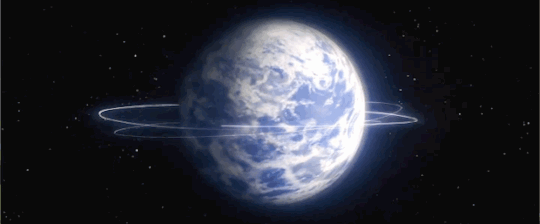



Sadly, this high point in the film is slightly ruined by Superman turing the world backwards. Whilst I like the plot idea of him going against his fathers orders, and doing something to change what has happened, the whole concept is too silly to follow up (and undo) such a strong emotional scene. It isn't explained well enough to work. Why does it appear that everything still occurred, except the crack in the road? Or did everything still occur? It's not explained. However, Jimmy arrives and mentions the earthquake, so it did still occur? How does it work? You can't not explain such a big story point. But this is what happens when you rewrite the ending at a time when everyone working on the film is exhausted and under extreme pressure. Even on the DVD commentary, Richard Donner doesn't seem able to explain how the plot works in this scene.
Superman the Movie is served best of all of course by the man himself, Christopher Reeve. Reeve gives an unforgettable performance as Superman and will for many, always be Superman. The best example of his performance is when he almost tells Lois he is Superman, as his body changes from awkward Clark into confident Superman, and then back again as he changes his mind. His flying scenes work because of him, the way he could use his body to appear to be flying, rather than just hanging on a wire. He also managed to not look silly in what is quite a silly looking suit. He made it work. His Clark Kent was modelled on Cary Grant in Bringing Up Baby. Reeves managed to give just enough difference between Clark and Superman to make it plausible that no one noticed.
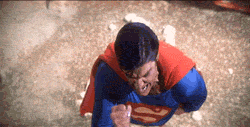

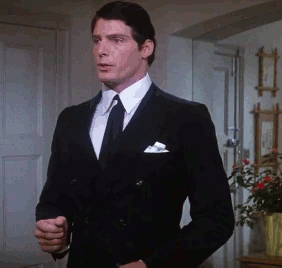
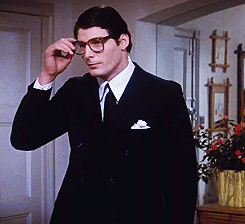

Director Richard Donner must also be mentioned. He made a comic book movie that has been used as a template for all comic book movies since, and at a time when comic book movies didn’t exist and no one thought it possible. Had Donner been allowed to finish Superman II who knows what would have happened to the Superman series. But sadly, this is the best film in the series. It became Warner Bros highest grossing film for many years. The effects still look pretty good. I hear people say that they don’t look good, but the flying stuff really works well in many scenes. Remembering too that this stuff hadn’t been done before (this was also made whilst Star Wars was being made) so it’s a very impressive achievement. The Blu-Ray is great for cleaning up some colour grading (such as Superman’s green costume, which was used in flying scenes to separate him from the blue screen).
Of the different versions of the film, I think the theatrical version is the best. Whilst its nice having extra scenes, none of the added scenes really give the film enough to warrant being kept in. But for true fans, its great to see more moments with these characters.